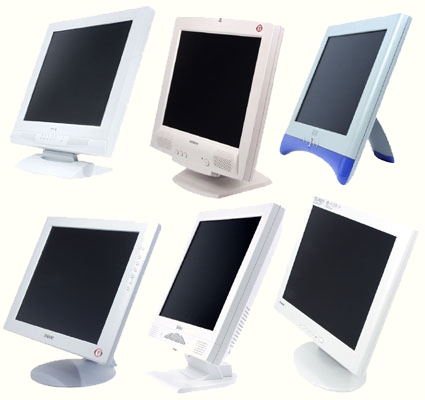17" LCD Part III: It's Christmas Already!
LCD Comparison, Part III: It's Christmas Already!
This is actually the sixth comparative test of LCD screens that Tom's Hardware Guide has published in the space of just one year. Yet again, we could have gone on with our usual arguments about liquid crystal screens (better definition, space-saving, etc. ) but we said all that already in our previous reviews.
For anyone who missed the previous episodes, we'll recap briefly by saying that these monitors often offer a choice between an analog or a DVI socket, depending on which type of graphics card you have installed. This tends to limit your options.The difference in quality between the two types of signal is not great enough to justify changing your card. If your graphics card is an old one, it probably has an analog output only, and that's fine. The good thing about the DVI connector is that the signal no longer needs to be converted. That means you no longer have to adjust the auto-alignment control upon powering up in order for the image to be perfectly centered and to stop flickering.
Prices have been in freefall since last summer. They were on the rise during the first half of 2002, but now, new entry-level records are being broken with prices down by 30% since September. The current indications are that the reductions will continue until early 2003, with new records being set in early January.
December 2002, Time For The First Evaluation
It's also time to review the evidence. The most spectacular announcement of the year turned out to be something of a damp squib. Everyone waited impatiently for the ViewSonic screens, which were unveiled at CeBit 2002. Two monitors were due to appear with record response times of 16 and 11 ms. Six months later, the VG700 and the VX2000 are on the market, but their specs fall far short of expectations. These monitors still have the standard 35 ms and 25 ms refresh rates. What a disappointment!
There has been a little progress, however. The 25 ms barrier has finally been broken! We tested the first model of this type. The new Ilyama AS4314UT is a 20 ms.
The second item of news is that Europe has caught up considerably with the United States. In fact, it's doing even better if you take into account the fact that US prices are not burdened with Value Added Tax, payable only on the other side of the pond. This means thtat European monitors are sometimes less expensive than the American versions. Europe would also appear to have become a testing ground for new manufacturers. Many screens have been launched here exclusively or in advance of the American model. Of the six screens tested this time, only three are already on sale in the United States. But don't worry if you live in the US, the three screens not yet available are not among those we recommend. Only one of the six is really outstanding and fortunately, it is also by far the least expensive. Take a bow, the Iiyama AS4314UT!
Get Tom's Hardware's best news and in-depth reviews, straight to your inbox.
Current page: LCD Comparison, Part III: It's Christmas Already!
Next Page The Displays